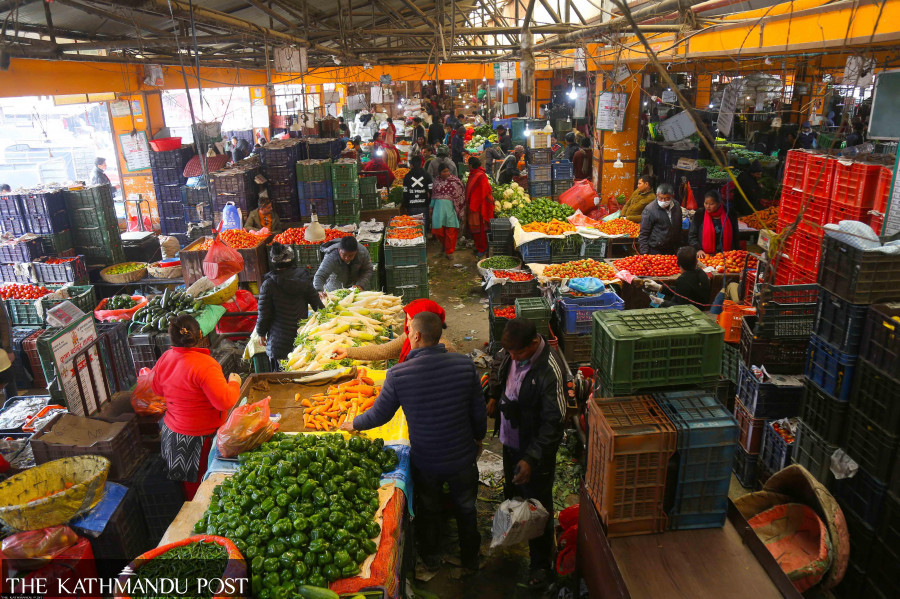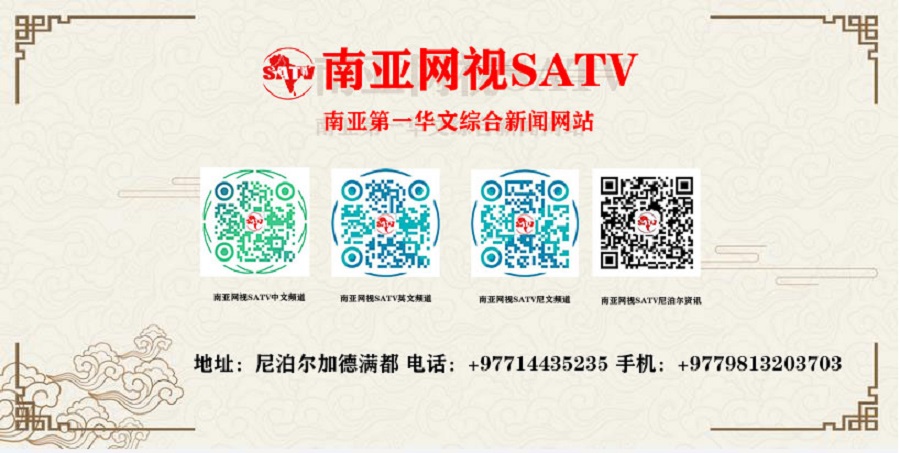
Vegetable farmer Jhilke Khadka of Dhunibesi Municipality, Dhading grows tomato, cauliflower and green onion which are sold at Kalimati, the largest produce market in Nepal.
Dhading district adjoins Kathmandu in the west, lying just over the Valley rim; but Khadka has never seen the market in Kalimati where he has been sending his vegetables for the past 16 years.
“Traders come to my farm,” he told the Post over the phone.
When the weather is favourable, the 50-year-old farmer harvests 3 to 4 tonnes of green onion and cauliflower each per season. He also produces over a tonne of tomatoes, the most sought after vegetable.
Narayan Luitel, who is also from Dhunibesi, has been a vegetable trader for seven years. He collects vegetables from farmers and dispatches them to the Kalimati market.
“I make a profit of Rs10 per kg from selling green onions. That’s a big profit margin,” said Khadka. “But the situation is not always in my favour. Sometimes we face losses.”
In the farm business, the profit margin fluctuates like the weather. Drought, disaster, strike, scarcity and road blockade mean a bonanza for vegetable traders. Then it's a seller's market, and they can name the price, vegetable traders say.
Nowadays, transportation and labour charges are high, according to Luitel. “I usually make a profit of not more than Rs5 per kg. But I pay the farmers regularly even if I suffer a loss,'' Luitel told the Post at the Kalimati market.
Green onions sell for Rs20 per kg at Kalimati. The same vegetable retails at Aloknagar, Baneshwar for Rs100 per kg.
Last week, Gita Rupakheti, who had brought cauliflowers from Khanikhola, Dhading, sold it for Rs20 per kg at Kalimati. “Earlier in the day, I was charging Rs25 to Rs30 per kg,” said Rupakheti, who has been in the business for a decade and a half.
“Obviously, prices vary. When we buy from farmers, we can get vegetables at a lower rate. They cost more when we buy from middlemen.” Rupakheti says she pays Rs16-17 per kg when she buys directly from the growers. “Farmers pay a transportation charge of around Rs2.5 per kg.”
On the same day, other traders at Kalimati were selling cauliflower for Rs30 to Rs40 per kg retail.
Rajkumar Khadka, 22, runs a wholesale stall at Shantinagar Tarkari Bazaar, a vegetable wholesale and retail market in Baneshwar, where he sells potatoes, onions and garlic.
“These days, it costs me Rs20 per kilo to bring potatoes from Sarlahi to Kathmandu,” Khadka told the Post on Thursday evening. “I paid Rs14 for the potatoes, Rs5 for transportation and Re1 for porterage.”
Nirmala Devi Panta, 54, runs a vegetable stall at Shantinagar. She was selling cauliflower from Kavre at Rs30 per kilo.
A 15-minute walk from Shantinagar at Sahayoginagar, Koteshwar, retailers were charging Rs50 per kilo for the same cauliflower. The retailers here get their inventory from the wholesale markets at Shantinagar and Kalimati.
According to the official website of the Kalimati Fruits and Vegetable Market Development Board, which tracks vegetable prices daily, cauliflower prices fell in the last week of March before rising again in April.
From March 25 to 29, the average prices of local cauliflower was Rs11.50 to Rs25 per kg. On March 30, the average price rose to Rs35.
While Khadka says he usually earns Rs10 per kg, the price doubles when the vegetable reaches wholesalers at the Kalimati market, and triples when it reaches retailers in different parts of the valley.
The goods and services sold in Nepal normally pass through up to seven layers of middlemen, each adding a hefty markup, forcing consumers to pay unfairly high prices, according to the report of the Department of Commerce, Supply and Consumer Protection.
Multi-layered supply chains are mostly seen in the trade of agricultural goods. A product with a farm gate price of Rs10 ends up with a price tag of Rs70 by the time it reaches the customer, the report said.
In most businesses, a product passes from the manufacturer to the dealer, main distributor, national distributor, local distributor, wholesaler and retailer before reaching the final user.
As there are no regulations to control the unnecessary layers of middlemen, the department said it had prepared a preliminary draft to lawfully determine the layers of middlemen in the distribution of essential goods under the Consumer Protection Act 2018. But it was never implemented.
The inconsistency in vegetable prices is a serious issue, say consumers.
“There is a monopoly in the vegetable market due to serious lapses in monitoring,” said Yam Bahadur Karmacharya, an 82-year-old shopper the Post met at Kalimati.
Karmacharya said he only trusted a few traders he had known for years, and bought his vegetables from them. “The authorities concerned should keep an eye on the prices. They should carry out market inspections regularly,” Karmacharya said.
“It looks like the market management committee is only busy collecting fees and taxes. It does not consider how it puts a burden on consumers who are suffering from high inflation.”
According to Nepal Rastra Bank, the year-on-year consumer price inflation stood at 5.97 percent in the first seven months of the fiscal year 2021-22 as compared to 2.70 percent a year ago.
The prices of ghee and oil, vegetables, and pulses and legumes rose by 20.68 percent, 14.07 percent and 9.36 percent respectively year-on-year.
Experts are worried that high inflation could make Nepali consumers cut back on their spending, which would be disastrous for the recovery of the economy hit by the Covid-19 pandemic and then the Russia-Ukraine war that disrupted supply chains with fuel prices reaching record levels in the global and domestic markets.
Consumer spending is the main driver of Nepal's economy. The Central Bureau of Statistics has revealed that, in the last fiscal year 2020-21 ended mid-July, Nepal’s final consumption expenditure at current prices amounted to Rs3.98 trillion, representing 93.38 percent of the gross domestic product.
Some consumers say there are massive variations in the prices of vegetables depending on the location, but everyone does not have time to visit the wholesale markets to buy vegetables.
Khadka said that traders get better prices when there is a shortage in the market. “But traders face losses too. Once, cauliflower prices fell to Rs7 per kg when we had bought them at Rs15 per kg.”
In Kathmandu Valley, vegetable prices fluctuate widely because of multiple layers of middlemen—especially between wholesalers and consumers, Khadka said.
Madhav Timalsina, president of the Consumer Rights Investigation Forum, says there are many levels of middlemen between farmers and customers which results in farmers getting less value for their produce. In the long term, this dissuades farmers from continuing farming.
In August 2018, the government formed a committee after seasonal vegetable prices shot up by 30 percent over a month while off-season vegetables became dearer by up to 50 percent due to the involvement of middlemen.
The committee report recommended making a purchase bill mandatory to ensure transparency in the purchase rate (the price paid to farmers) and reduce the involvement of middlemen in the supply chain.
“The government failed to implement the recommendations, giving middlemen more leeway in raising prices,” Timalsina said. “The Consumer Protection Act 2018 has provisions to determine the market price level. But nothing has been done so far.”
Middlemen take home a hefty sum of money, in some cases more than the farmers’ earnings, traders say.













